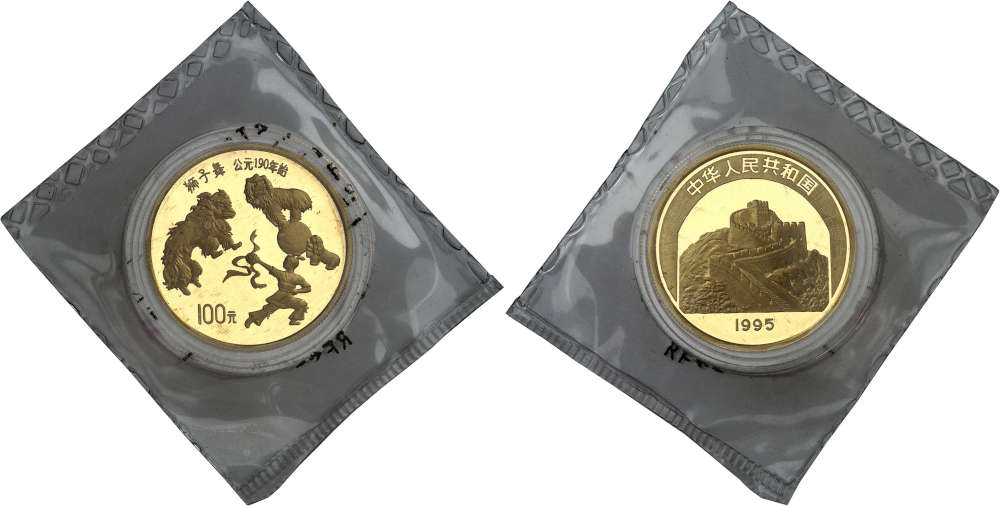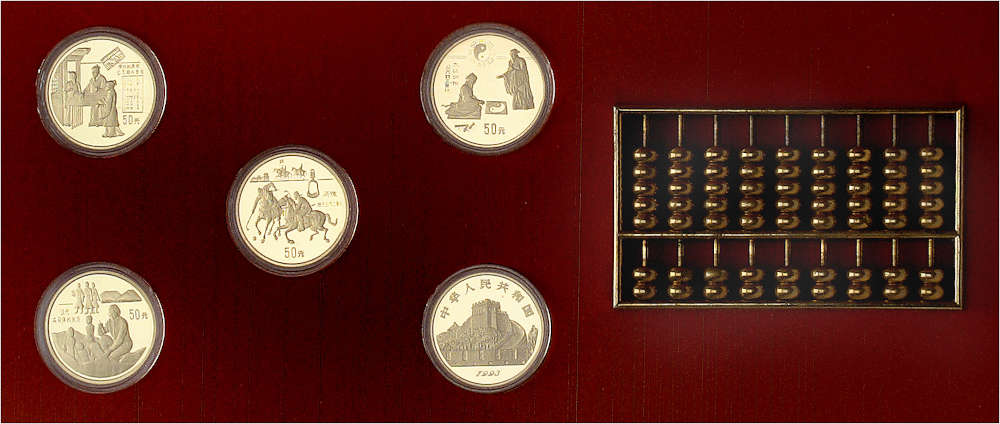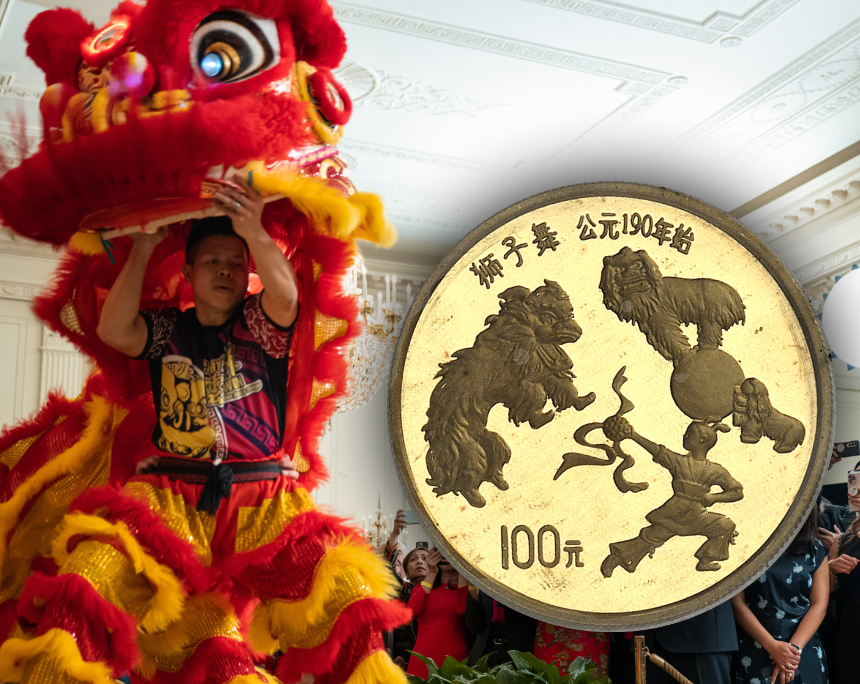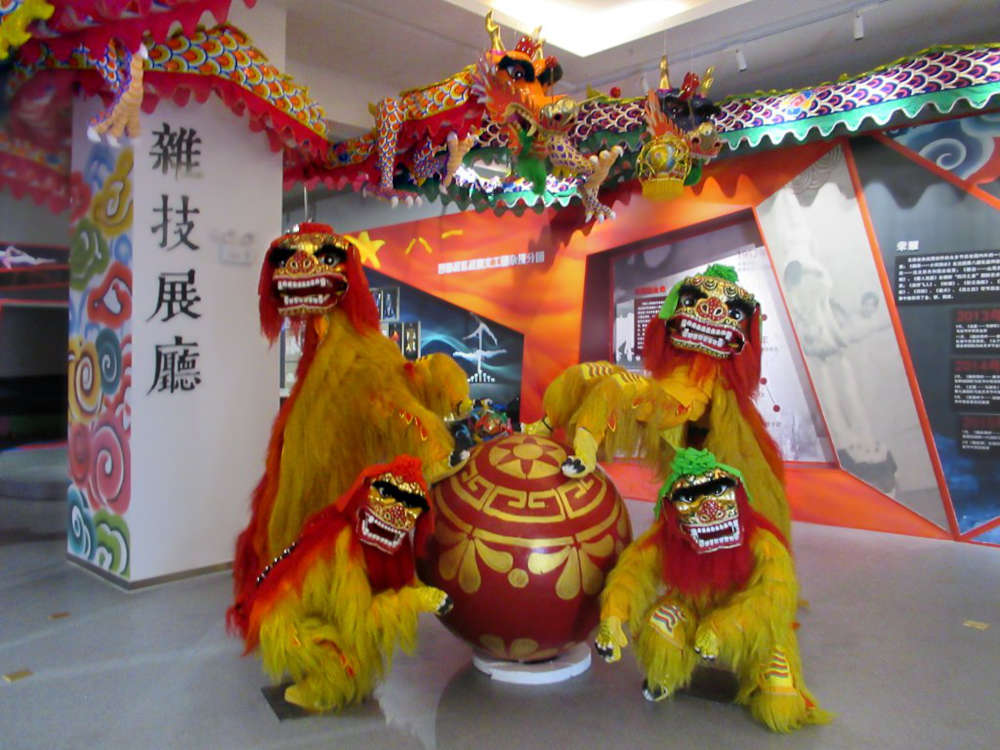100 Yuan Lion Dance 1995: One of the Rarest Chinese Coins of Our Age
In the 1990s, the coin market was bottoming out. After the high-price era of the silver boom, both precious metal prices and the demand for coins plummeted. This was due to the high losses that collectors of contemporary pieces were confronted with: while there was still a market for historical coins in the 1990s, there was none for contemporary coins – not even for the great rarities. This means that all those who had bought coins in the 70s and 80s and wanted to sell them made a triple loss: for one because the material value of the coins had drastically decreased, in addition there was the surcharge of the mint and, thirdly, due to the profit margin of the seller.
Content
The media covered the high losses, which in turn impacted the sale of contemporary coins that were newly released by the mints – sales plummeted. Countries that did not have a domestic market suffered most from this development, most importantly Russia and China.
In the 1980s, China had sold commemorative coins via direct marketing firms with quite a profit to customers who mostly resided in Germany. The Panda, which was first issued in 1982, became a best-seller. And yet this business collapsed in the first half of the 1990s. Only a fraction of the planned issues could actually be produced. This mainly affected gold coins.
Those who wanted to buy the pieces regardless can rejoice today as the coins significantly increased in value. After all, some of the coins issued between 1993 and 1995 are among the rarest Chinese coins of our age. Heidelberger Münzhandlung offers a small series of numismatic issues from this era. We present one of them in this article: a 100-yuan coin on the topic of the Chinese Lion Dance.
The Northern Lion Dance
The theme of this commemorative coin was well chosen – after all, the Lion Dance is an essential part of Chinese identity. It is an auspicious ceremony that is part of Chinese New Year celebrations. However, it is also performed at weddings, the opening of a new business or an important state visit.
The Lion Dance was also very popular in Western countries – especially among those who enjoyed the popular kung fu films of the time. The reason for this is that the Lion Dance tends to remind western viewers of acrobatics, and the dance is often performed by martial artists as it requires perfect body control.
Therefore, it was Jet Li who made the northern version of the Lion Dance – as is depicted on the coin – popular throughout the West at the young age of 19 years. The Lion Dance was an important element of his 1982 movie Master of Shaolin. The scene was met with such an enthusiasm that every single one of the numerous sequels in the Shaolin saga contained a Lion Dance performance.
Therefore, avid cinema-goes could have immediately identified the image on the coin as the participants in the northern version of the Lion Dance: First we have an unmasked acrobat, brandishing a spherical object decorated with ribbons in his hand. The two large lions – a male and a female – come to life thanks to two people each and give the dance its name. Immense coordination and body control is required to have each lion perform his balancing tricks on a sphere in a credible manner. In addition, there are any number of small lions, each played by a single person. The coin only depicts one of them.

China. 100 yuan 1995 “Lion Dance”. Only 138 of the planned 1,000 pieces minted. Extremely rare. Damaged certificate. Proof. Estimate: 5,000 euros. From Heidelberger Münzhandlung, auction 88 (13-15 May 2024), No. 1057.
Just 138 Pieces Instead of 1,000 Were Struck
Despite the highly popular theme, the Lion Dance gold coin with a denomination of 100 yuan and a weight of one ounce of gold (.999) met with little interest from the Chinese mints’ Western partners. It had been planned to release 1,000 pieces of the coin – which is a very small number already. But due to the lack of demand, in the end only 138 coins with this motif were minted. Here you can see this rarity of the auction sale on Auex.
Today, this coin is proof that the purchase of a contemporary commemorative coin can be a good and profitable investment, too. At least as long as you make acyclic purchases and have the time to wait until a collectors’ market for the coins emerges.

No. 1050 – China. Lot of 5 x 50 yuan 1993 “Inventions & Discoveries” with abacus. Only ca. 402 of the planned 1,200 sets were produced. Extremely rare. In original case. Proof. Estimate: 7,000 euros. From Heidelberger Münzhandlung, auction 88 (13-15 May 2024), No. 1050.
Not quite as rare but almost as rare is this set of 5 50-yuan coins of 1993 on the topic of “inventions and discoveries of antiquity”. Instead of the planned 1,200 sets, only 402 were produced. Here you can see this rarity on Auex.
If you want to see for yourself how Jet Li performs the Northern Lion Dance, watch this YouTube video:
You are currently viewing a placeholder content from YouTube. To access the actual content, click the button below. Please note that doing so will share data with third-party providers.








